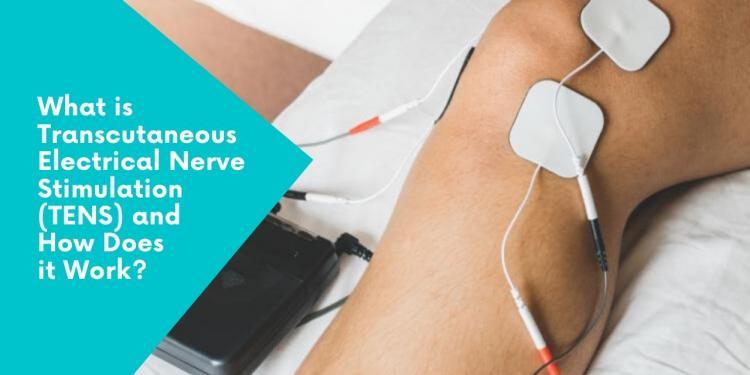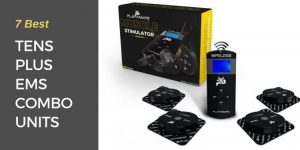High impact sports and exercises like martial arts has the highest risk of damage to the body. That is why paying attention to rehab and recovery is just as important as getting the most out of your training time. During rehab for my shoulder surgery, the physical therapist used something called a TENS unit after my rehab exercises to speed up recovery.
Transcutaneous Electrical Nerve Stimulation or TENS therapy works on nerves rather than muscles and has the sole purpose of relieving pain. TENS therapy uses an electric current produced by a machine to stimulate the nerves for therapeutic purposes. When patients are offered TENS therapy by either their physical therapist or health practitioner, they often have reservations. It’s common to wonder why drugs can’t relieve your pain. They also consider electrical nerve stimulation to be a relatively new therapy. However, you’d be surprised at how long TENS has been used.
In this short guide, we look at the development of TENS therapy, how it works, who can benefit from TENS therapy and how it can help athletes.
TENS from the Beginning
Believe it or not; the first recording of the use of TENS was in 46 A.D.
Scribonius Largus, the court physician treated the Roman Emperor Claudius with electrical torpedo fish. He described placing the live black torpedo fish on the site of the pain. He described how the treatment could “ immediately remove and permanently cure a headache, however long-lasting and intolerable.” The treatment continued until the pain ceased or the area became numb.

Founding father, Benjamin Franklin was also famous for early experiments with electricity. He used electrical shocks to treat a frozen shoulder in 1757, and as pain relief for his headaches.
However, it wasn’t until the twentieth century that TENS truly began life. The gate control theory of pain was suggested by neuroscientist Patrick David Wall and psychologist Ronald Melzack. It was proposed that by stimulating nerves that transmit touch, the transmission of pain could be blocked.
The gate control theory of pain is the cornerstone of electrotherapy and TENS. The modern TENS unit is generally credited to neurosurgeon Norman Shealy. It was first manufactured by the Medtronic company in 1974.
How Does TENS Work?
A TENS device is essentially a machine made up of a battery pack attached to leads and adhesive pads, similar to those used for ECGs.
During the treatment, the user will usually feel a pulsating or tingling feeling. The stimulation has the effect of tricking the mind into feeling the stimulation rather than the underlying pain.
Most TENS devices use gel pads but some variations use a glove or sock to target a larger area. A TENS implantable spinal cord stimulator is a consideration for more severe pain.
Who Should Use TENS?
The use of TENS has proved to be effective in several clinical studies. TENS sessions can manage pain in the following conditions:
- Arthritis
- Ankle problems (including osteoarthritis, tarsal tunnel syndrome)
- Back or neck problems (including sciatica)
- Bursitis
- Calf injuries
- Carpal tunnel syndrome
- Fibromyalgia
- Foot and toe issues (OA, plantar fasciitis, metatarsalgia, bunions, hammertoes, sore arches, peripheral neuropathy)
- Groin injuries
- Hamstring injuries
- Hand injuries (including Dupuytren's contracture and palmar fasciitis)
- Hip injuries
- Knee injuries
- Multiple sclerosis
- Migraines and headaches
- Shin splints
- Shoulder injuries
- Tendinitis
How Can TENS Help Athletes Recover From Injury?
If you have any misgivings about trying TENS, there are very few risks or side effects and the therapy is proven to effectively relieve pain. As athletes, pain can be an everyday part of life, and injuries are common.
A TENS device is an effective drug-free treatment for many sports injuries. It's important to remember that a TENS device can relieve pain but does not heal injuries. For this reason, you should consider teaming TENS therapy with other therapies, including EMS to promote healing.
The most common injuries suffered by martial artists include fractures, tears, shin splints, and strains. Martial artists are also susceptible to overuse injuries of the lower limbs, ankles, and feet. All of these injuries can benefit from TENS to reduce pain. They are also treated effectively with EMS.
To help avoid injuries, you should ensure you stretch properly before training. However, injuries do happen often. Whether it’s a hamstring or groin strain, fracture, sprain or overuse injury, EMS can help to heal and TENS can reduce pain. To reduce pain with TENS, you should place the pads on the site of the pain where they feel most comfortable.




